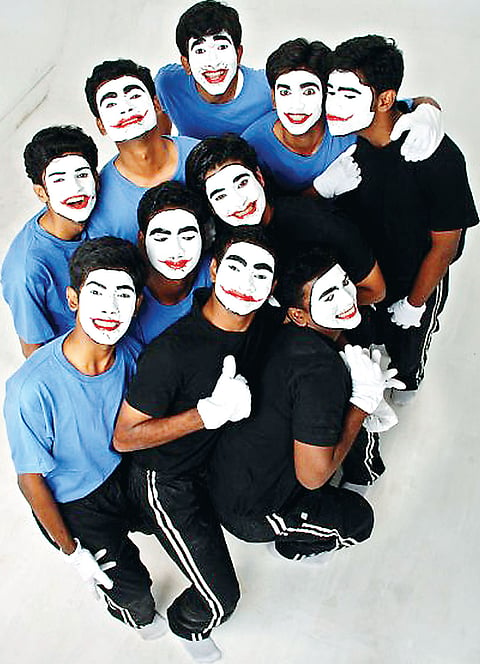

If subtlety is the trait of an actor on screen, exaggeration is the hallmark of a theatre actor, especially when it comes to mime. In addition to a vibrant theatre scene, Chennai also has a culture of mime — from Mime Gopi, who has been in the field for close to two decades, to the newest kid on the block, MacTrics.
The performing art seems to have taken off with Mime Gopi and his G Mime studio, started 19 years ago. It started out with college level competitions, grew to a six-member team known as Charlie Chaplain Theatre Society and now is a fully functioning studio of more than 20 members. “It was difficult in the beginning as mime was not an easy concept for the audience to grasp. Many think mime is a silent medium but I consider it a precursor to theatre,” says the veteran mime artist.
Mime has its origins in ancient Athens where it was performed to celebrate Dionysus, the god of theatre. Mime involves building of characters and narration of stories with just body movements and no speech, which creates a higher sense of drama. “Miming is innate to human beings,” Gopi explains, “From the moment we are born we are entertained by the gimmicky hand movements of those around us. When we are unable to communicate verbally, it’s our instinct to mime.”
Compared to the French approach to mime where a single scene is enacted for five minutes, here we see something less abstract — with 10 scenes being enacted at a time. One of the newer theatre groups ready to tap into this trend is Unarviyam, a mime and theatre group started in 2009 by a bunch of college graduates. Focused on producing original pieces, the group concentrates on finding the right balance between a strong story line and humour. With hits like The Looter’s Looty and Inglorious Barber, received well by the Chennai audience, their next production Showboat will be a mix of theatre and mime.
Vatsan Natarajan, one of directors of Showboat, emphasises that while the French approach is healthy, it is often difficult to comprehend. “Almost every mime piece lures the audience with humour. It is this, along with the exaggerated expressions, that makes narration in mime a lot easier to understand,” he says. Referring to the influence of cinema on live performances, the director adds, “It is quite possible that mime lost its audience due to the shift in focus from silent movies to talkies.”
With the lack of a public platform, mime did take a hit in popularity. But with the art now penetrating schools and colleges, many groups have emerged. Mime and body theatre groups like MacTrics have sprouted because of their success at college level competitions. Formed in 2009 under the guidance of the late theatre veteran Mithran Devanesen, they have caught the eye of a constantly evolving Chennai audience “We formed MacTrics after our success at IIT Saarang,” says Sravanth, a core member of MacTrics.
Their biggest production, Vidhuran (2011), was a modern-day adaptation of Mahabharata. “We built everything with body theatre, from stones to chariots to palaces, everything was pure human formations.”
Productions like Vidhuran, despite problems in promotion, definitely played an important role in bringing the audience and mime together.